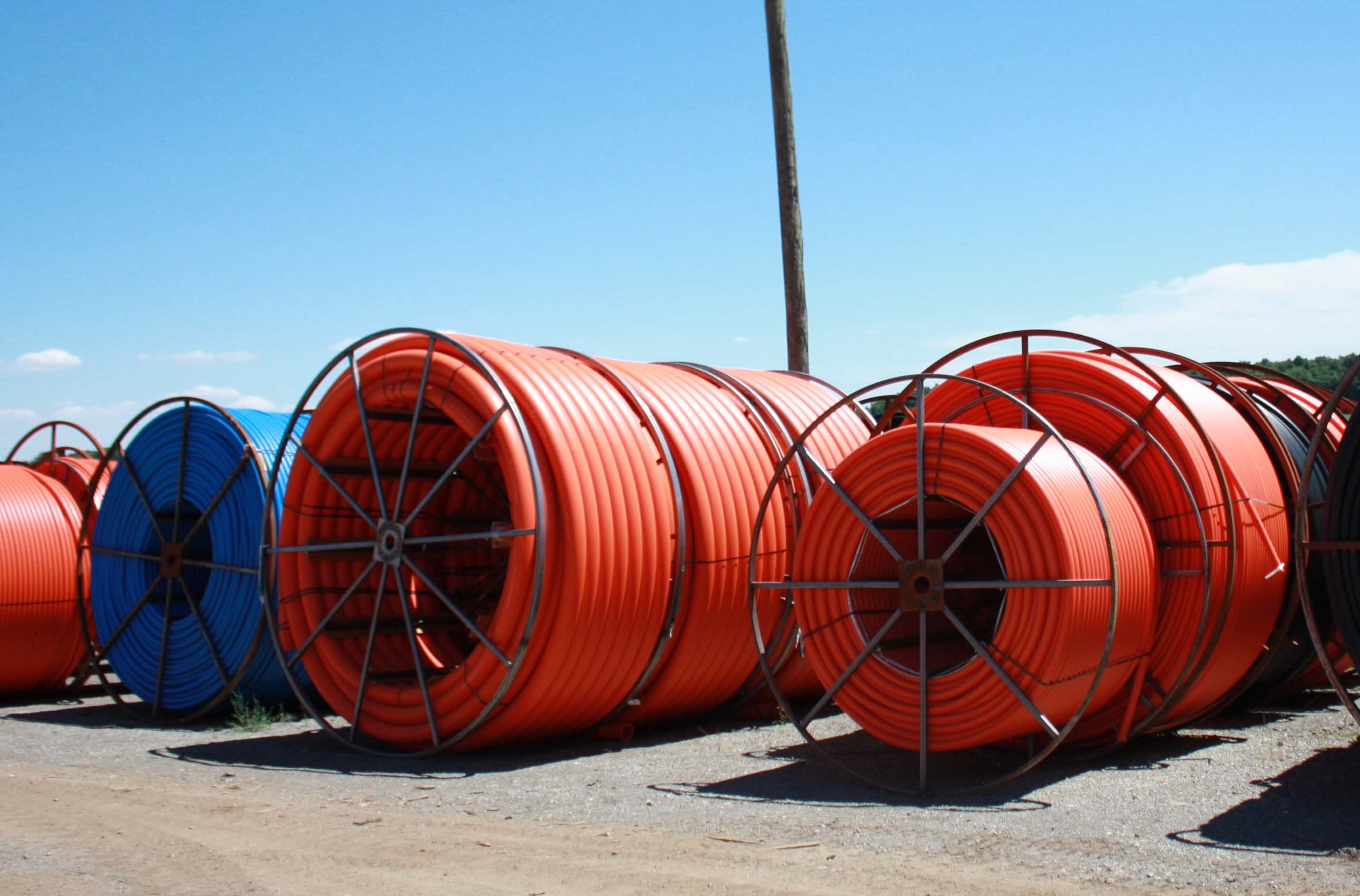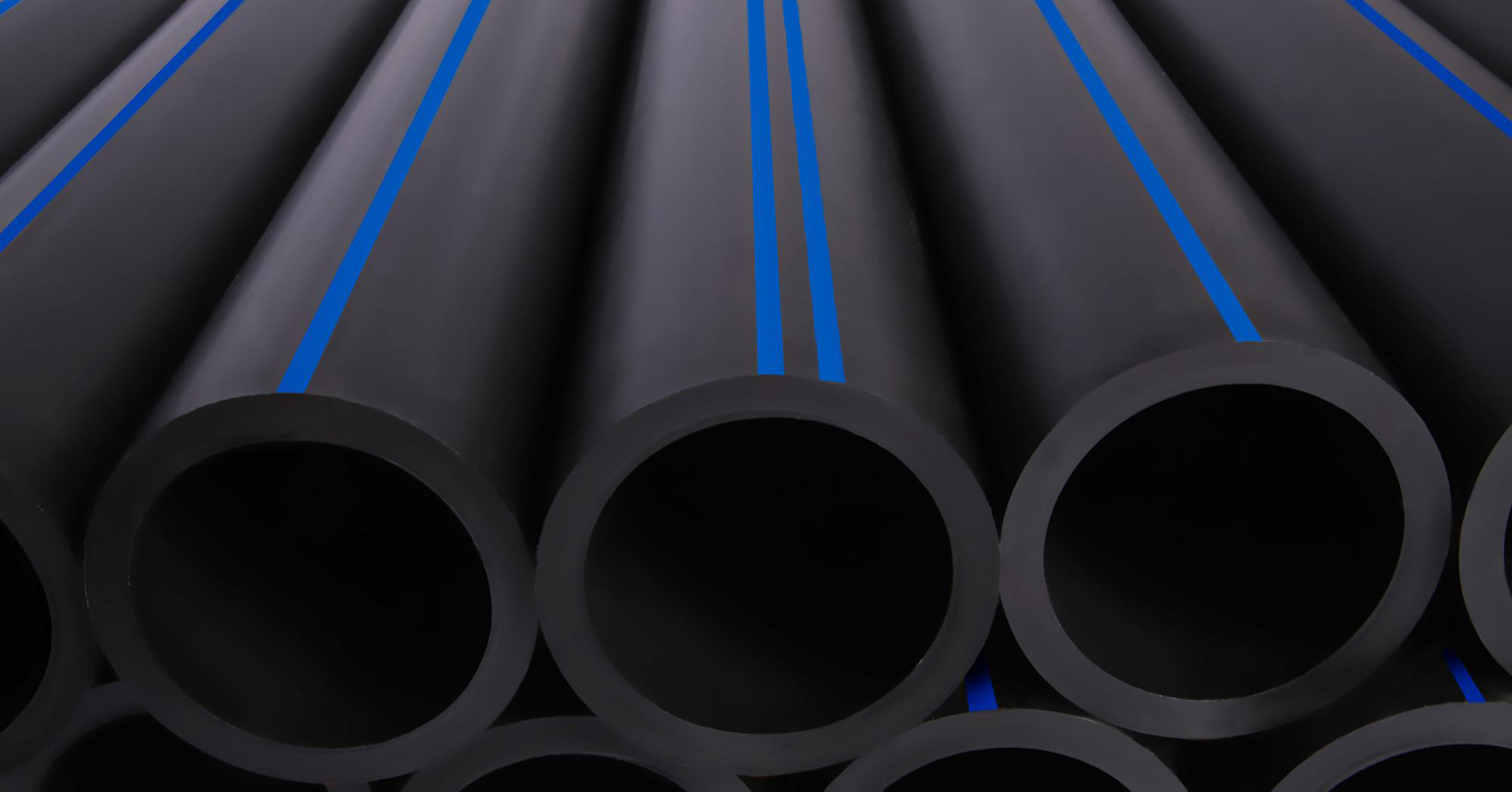Discover the Production Process Behind High-Quality HDPE Pipe and Its Applications
The manufacturing procedure of high-quality HDPE pipelines is elaborate and systematic. It starts with the selection of resources that boost efficiency. Following this, ethylene undergoes polymerization to form resin, which is after that formed via extrusion. Quality control is paramount, making sure that the final product meets stringent standards. However, the trip of HDPE pipelines doesn't end with production. Their applications across different markets disclose a wider relevance worth checking out.
Understanding HDPE: Characteristics and Advantages

High-density polyethylene (HDPE) is a flexible thermoplastic known for its toughness and resistance to different environmental variables. This material displays excellent tensile stamina, making it suitable for requiring applications. Its low-density structure contributes to a light-weight product, facilitating convenience of taking care of and setup. HDPE additionally showcases exceptional resistance to chemicals, which decreases deterioration when subjected to severe materials.
The product's low dampness absorption even more enhances its long life, making it optimal for usage in pipelines and storage tanks. Furthermore, HDPE is immune to ultraviolet (UV) radiation, making sure that products preserve their integrity also when subjected to sunshine. Its flexibility enables for the production of intricate shapes without endangering toughness. The environmentally friendly nature of HDPE, commonly stemmed from recycled materials, contributes to its charm, promoting lasting methods in production. Overall, these homes and benefits make HDPE a recommended choice for various commercial and consumer applications.
Raw Material Choice for HDPE Production
The choice of resources for HDPE production is essential to confirm the final product satisfies the preferred specs and high quality criteria. High-density polyethylene (HDPE) is mainly created from polymerized ethylene, stemmed from nonrenewable fuel sources such as gas or petroleum. The high quality of these feedstocks substantially affects the mechanical and thermal residential or commercial properties of the last HDPE.
Additives also play a substantial duty in enhancing HDPE's efficiency, including antioxidants, UV stabilizers, and colorants, which improve durability and resistance to ecological aspects. The option procedure have to think about not only the chemical composition of the raw materials yet likewise their processing features to ensure effective manufacturing.
Moreover, the sourcing of raw products ought to prioritize sustainability and conformity with environmental regulations, as liable methods are imperative in today's market. Inevitably, careful basic material choice lays the structure for creating high-grade HDPE pipelines suitable for diverse applications.
The Extrusion Refine: Shaping HDPE Pipeline
The extrusion procedure plays an important duty in shaping HDPE pipelines, beginning with meticulous material preparation techniques that ensure perfect circulation and uniformity. Similarly important is the design of the die, which straight affects the final measurements and surface high quality of the pipe. Together, these aspects contribute considerably to the performance and high quality of HDPE pipeline production.
Material Prep Work Techniques
Efficient production of HDPE pipelines starts with meticulous material prep work strategies, particularly the extrusion process. During this stage, high-density polyethylene resin is very first dried to eliminate moisture, guaranteeing perfect flow qualities. The material is after that fed into the extruder, where it goes through home heating and melting, transforming right into a thick state. This home heating procedure is carefully controlled to maintain the material's integrity and performance. The molten HDPE is required through a die, shaping it right into a constant pipe type. Appropriate temperature level management throughout extrusion is important, as it directly influences the material's homes and the end product quality. When formed, the HDPE pipe is cooled and reduced to defined sizes, all set for succeeding processing and applications.
Die Layout Value
Accuracy in die style plays a crucial duty in the extrusion procedure of HDPE pipelines. The die functions as the last shaping device, straight affecting the pipe's measurements, wall density, and surface coating. A properly designed die assurances uniform material circulation, minimizing problems such as abnormalities and vulnerable points. The geometry of the die need to be enhanced to accommodate the particular homes of HDPE, including its thickness and thermal behavior during extrusion. Furthermore, the cooling price of the material as it passes via the die can markedly impact the pipeline's structural honesty. As a result, spending in sophisticated die technology is crucial for manufacturers aiming to create premium HDPE pipelines that meet market requirements and consumer assumptions.
Quality Control Actions in HDPE Production
Numerous elements affect the high quality of HDPE pipeline production, efficient quality control steps are vital to guarantee uniformity and integrity in the last item (Pipe Manufacturing Midland TX). Key quality assurance techniques consist of extensive material evaluation, validating that the raw polyethylene fulfills well established requirements for purity and density. During the extrusion process, criteria such as temperature level, stress, and cooling time are very closely monitored to keep dimensional accuracy and structural stability
In enhancement, post-production testing is vital; makers usually conduct hydrostatic examinations to examine the pipe's strength and resistance to stress. Aesthetic assessments for surface problems better improve high quality guarantee. Accreditation from appropriate criteria organizations, like ASTM or ISO, offers an added layer of trustworthiness. By applying these thorough quality assurance actions, manufacturers can reduce defects, enhance efficiency, and guarantee that the HDPE pipelines satisfy the particular needs of numerous applications, inevitably resulting in consumer complete satisfaction and rely on the item.
Applications of HDPE Pipeline Throughout Industries
HDPE pipelines are made use of throughout numerous markets due to their durability and versatility. In water distribution systems, they ensure efficient distribution, while in wastewater administration, they offer reliable solutions for waste transport. Furthermore, farming irrigation networks gain from HDPE's resistance to rust and adaptability, making it an optimal option for contemporary farming techniques.

Water Distribution Equipments
A significant number of industries rely upon high-density polyethylene (HDPE) pipelines for efficient water circulation systems. Understood for their toughness and resistance to deterioration, HDPE pipelines are extensively utilized in municipal supply of water networks, agricultural irrigation, and industrial applications. Their light-weight nature helps with simple handling and installment, lowering labor prices and time. Furthermore, HDPE pipes can fit different pressure levels, making them appropriate for both reduced and high-pressure systems. hdpe pipe in stock Midland TX. The flexibility of the product permits seamless assimilation right into existing infrastructure, reducing the demand for comprehensive excavation. HDPE's resistance to chemical leaching assurances that the water delivered continues to be risk-free and tidy, making it an optimal choice for keeping the quality of drinkable water throughout numerous markets.
Wastewater Monitoring Solutions
Effective water circulation systems additionally lead the way for innovative wastewater monitoring options, where high-density polyethylene (HDPE) pipes play a considerable role. Distinguished for their sturdiness and resistance to corrosion, HDPE pipelines are optimal for transferring wastewater in numerous settings. Their adaptability enables easy installation in intricate environments, lessening the requirement for considerable excavation. In addition, HDPE's smooth indoor surface lowers friction, enhancing circulation rates and performance. These pipelines are additionally immune to chemical leaching, guaranteeing that contaminants do not endanger the surrounding atmosphere. Industries, municipalities, and treatment facilities significantly depend on HDPE pipelines for their integrity and long life, making them a favored selection for contemporary wastewater monitoring systems. This flexibility highlights the vital relevance of HDPE pipes across many applications.
Agricultural Watering Networks
Agricultural irrigation networks profit greatly from using high-density polyethylene (HDPE) pipelines, which supply efficient and trusted water distribution to plants. HDPE pipes are light-weight, making them simple to transfer and install, while their flexibility enables various setups in varied terrains. These pipes demonstrate exceptional resistance to rust, chemicals, and UV radiation, making certain resilience in harsh farming settings. In addition, their smooth indoor surface area minimizes rubbing loss, optimizing water circulation and minimizing energy expenses related to pumping. The long life of HDPE pipelines, often exceeding half a century, adds to decrease maintenance and replacement expenditures. Farmers progressively rely on HDPE pipes to enhance watering performance and promote sustainable agricultural techniques, inevitably leading to boosted crop returns and source preservation.

Future Trends in HDPE Pipe Modern Technology
As the need for sustainable and reliable framework grows, innovations in HDPE pipe technology are poised to change various industries. Emerging fads include the integration of clever technologies, such as sensing units and IoT capacities, which promote real-time surveillance of pipe conditions, decreasing maintenance costs and avoiding leakages. In addition, the growth of advanced manufacturing methods, such as 3D printing, is enabling the production of complicated, personalized pipeline styles that provide to certain project requirements.
Additionally, the focus on recycling and circular economic climate methods is driving the advancement of HDPE pipelines made from recycled products, improving sustainability. Boosted jointing approaches, such as electro-fusion and mechanical installations, are additionally enhancing installation efficiency and reliability. Finally, the growing focus on environmental guidelines is pressing suppliers to embrace greener production procedures, making sure that HDPE pipelines not just fulfill industry requirements yet also promote an even more lasting future for framework advancement.
Often Asked Inquiries
How Does HDPE Contrast to Other Plastic Products?
HDPE outmatches lots of various other plastic materials regarding longevity, chemical resistance, and versatility. Its reduced density and high tensile stamina make it ideal for different applications, typically surpassing options in both performance and durability.
What Are the Ecological Impacts of HDPE Manufacturing?
The environmental effects of HDPE production include greenhouse gas discharges, energy usage, and possible pollution from manufacturing processes. In addition, improper disposal can cause dirt and water contamination, increasing concerns regarding lasting environmental results.
Can HDPE Pipeline Be Reused?
Yes, HDPE pipelines can be reused. Numerous facilities accept made use of HDPE for handling, changing it right into new products. This reusing contributes to sustainability efforts, minimizing plastic waste while preserving resources and power in the manufacturing cycle.
What Is the Lifespan of HDPE Water Lines?

How Do Temperature Level Variants Influence HDPE Pipeline Efficiency?
Temperature level variants significantly affect HDPE pipeline efficiency, affecting adaptability and toughness. High temperature levels can lead to here softening, while low temperature levels might cause brittleness, ultimately affecting the pipeline's resilience and suitability for various applications in diverse settings.